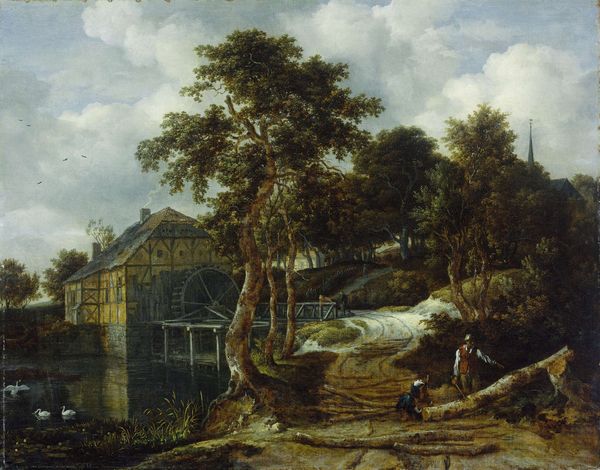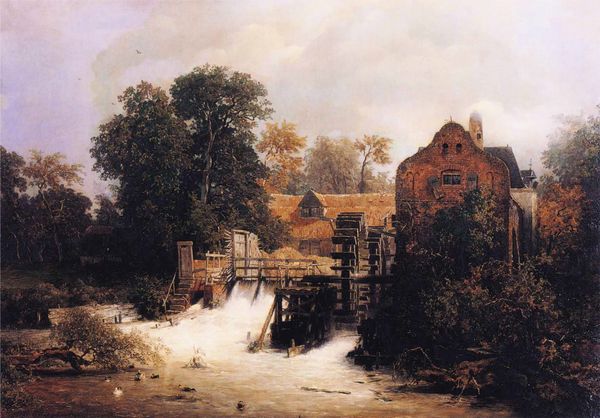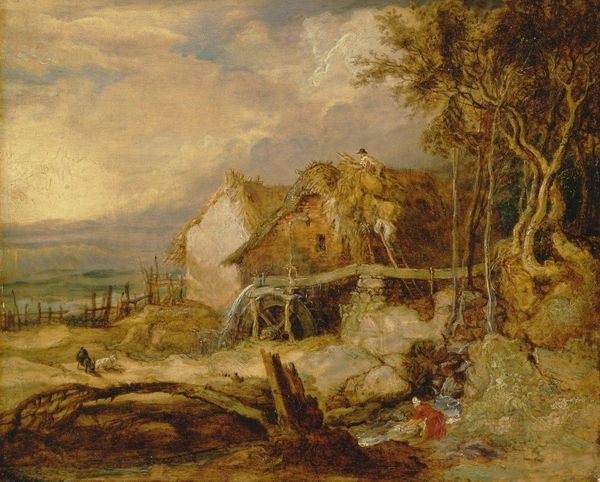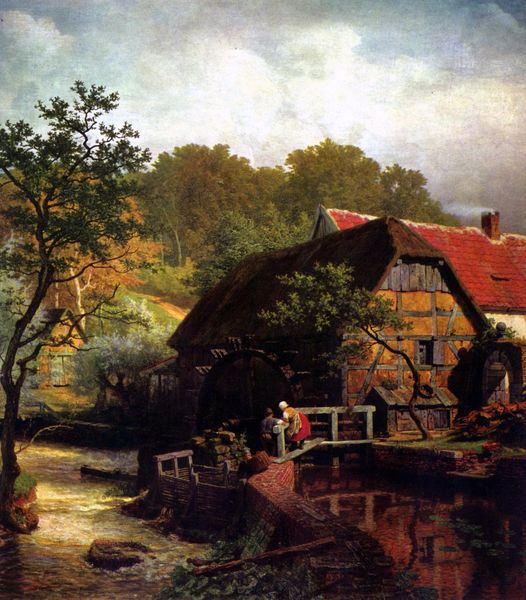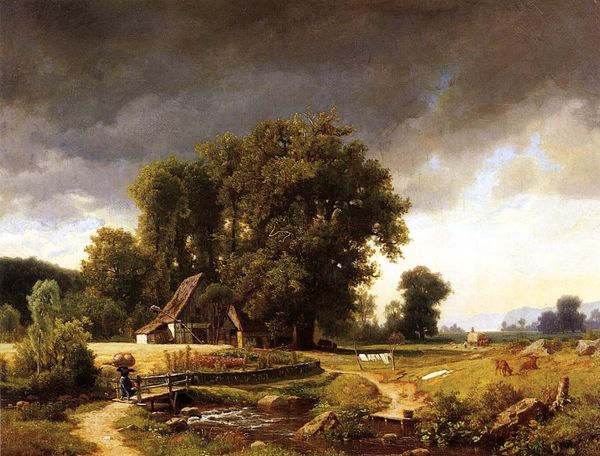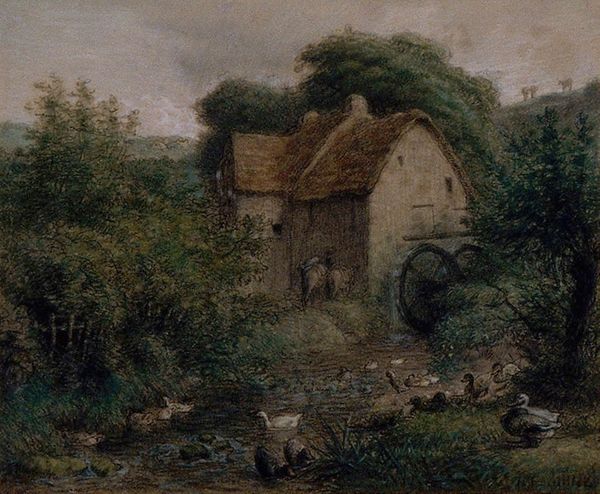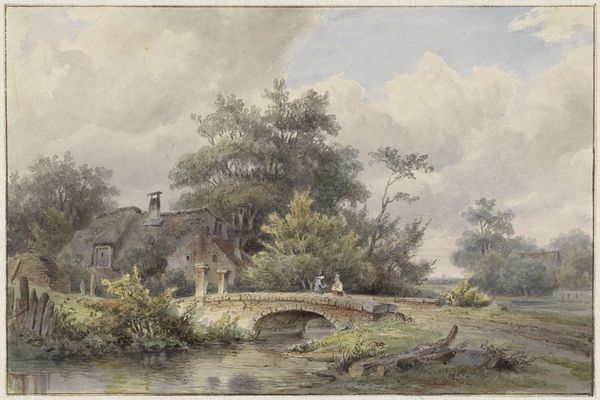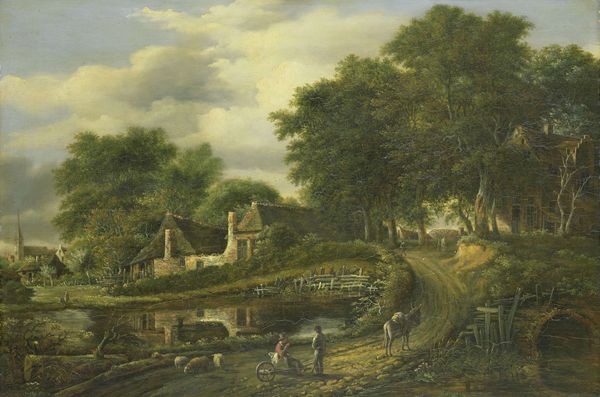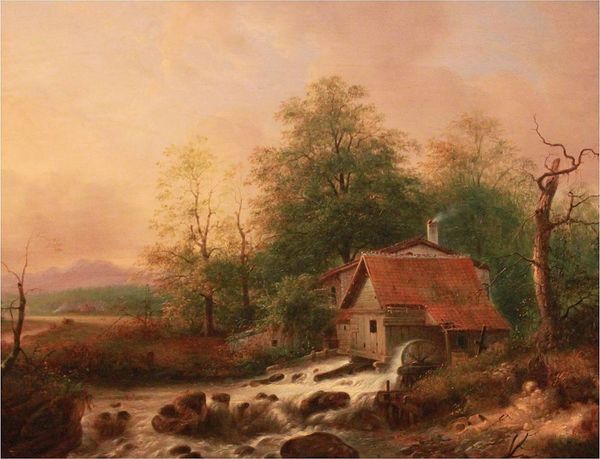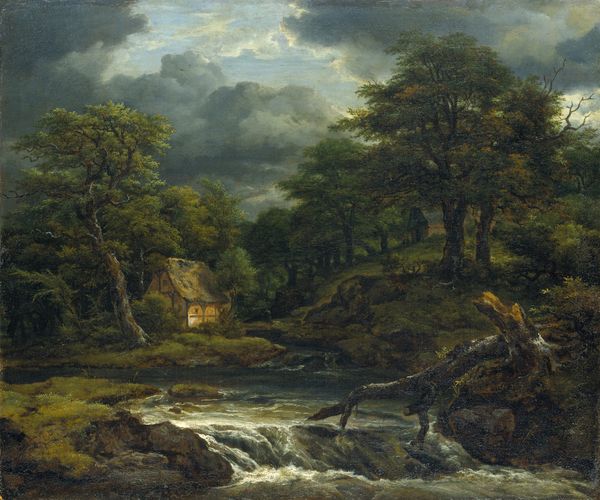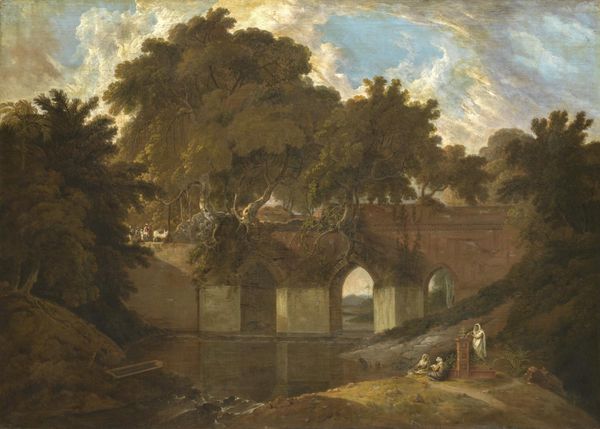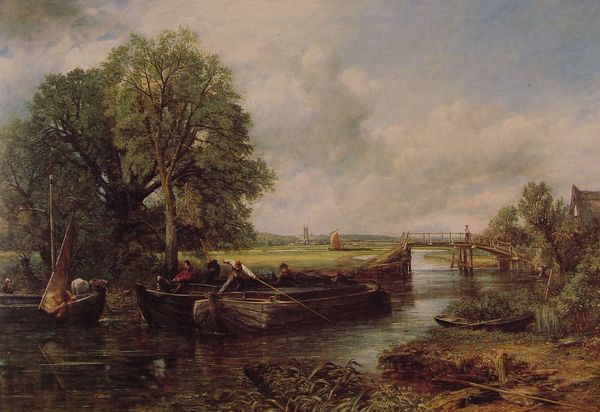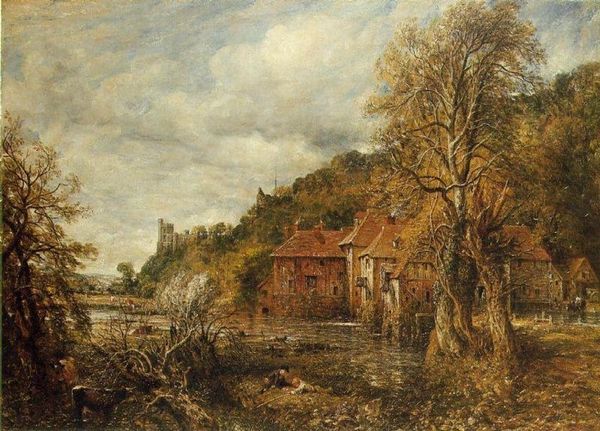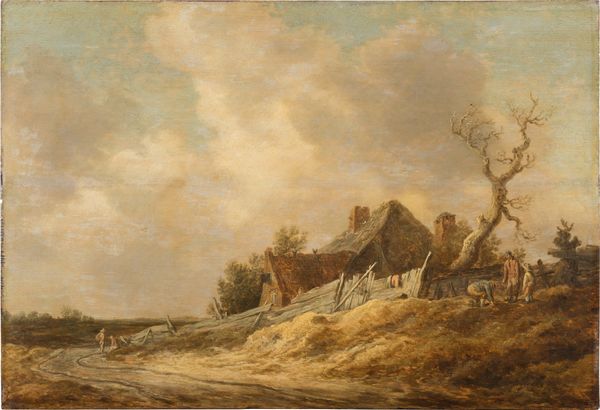
oil-paint
#
oil-paint
#
landscape
#
oil painting
#
romanticism
#
genre-painting
#
realism
Copyright: Public Domain: Artvee
Curator: Ah, "Parham Mill, Gillingham" by John Constable, circa 1826. Look closely at the composition, typical of his dedication to rendering the English countryside. Editor: Mmm, immediate feeling? Wet socks and the hypnotic churn of water. It's less picturesque idyll, more "realistic damp." But in a cozy way! Curator: Constable sought to capture the essence of working landscapes, the impact of agriculture, and industry shaping rural life. His focus shifted painting as social document. This is also the Romantic style. Editor: Romantic indeed! All that water cascading – total sensory overload. I imagine he just stood there and let the noise and light soak into his bones before translating it to canvas. See how he makes the water look liquid. You almost hear the clacking wheel and quacking ducks! Curator: The romantic movement at the time elevated the depiction of the individual and natural world as a form of high art. In other periods the commoner at labor would have been seen as beneath subject, or as strictly genre painting. Editor: And look at how light dances off the foliage! It’s a humble scene, sure, but it’s teeming with life and work and tiny dramas unfolding along the riverbank. I would be thrilled to experience what it would be like standing there on a cool fall morning. Curator: You are right in pointing that. And of course, this mill would have been at the heart of the community’s economic life in rural England. It is great that Constable draws our attention to its vital importance. Editor: Exactly. It wasn't just pretty scenery—it was livelihood. That makes this, for me, so much richer. All right! I would move into that mill immediately! Any vacancy available for rent, please? Curator: Ultimately, viewing Constable's landscapes through the lens of social and industrial history helps us consider his legacy within broader societal shifts of the 19th century. It has been an adventure. Editor: Yes, that touch of realism just cuts through any idyllic haze for me. Thanks for this deeper vision. It's now my turn to stand here absorbing art history and social history with open senses. Bye for now!
Comments
No comments
Be the first to comment and join the conversation on the ultimate creative platform.
